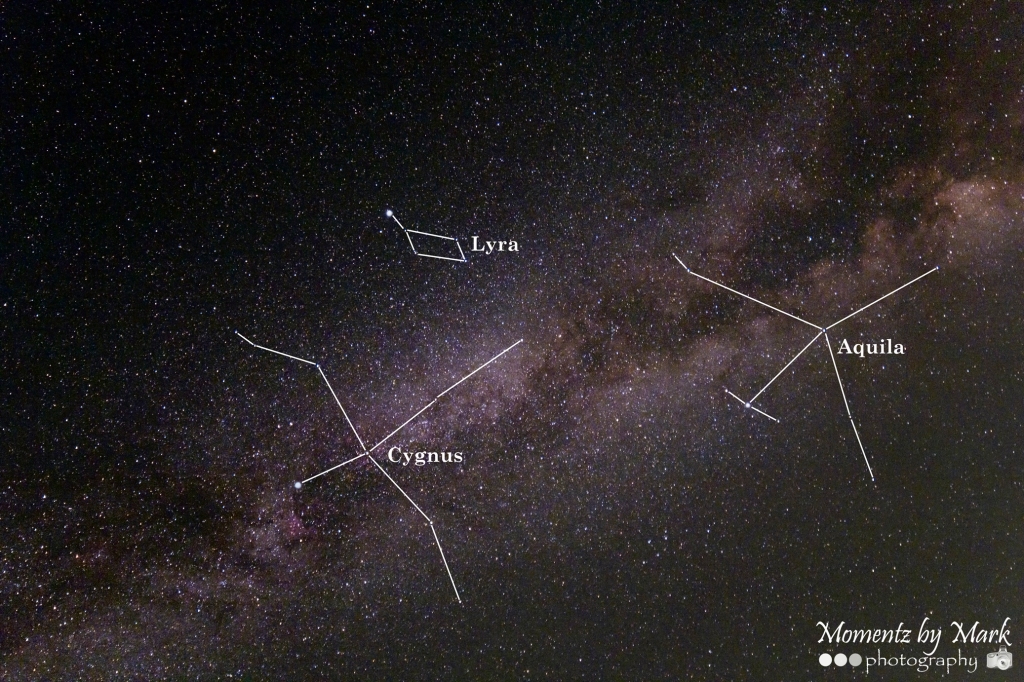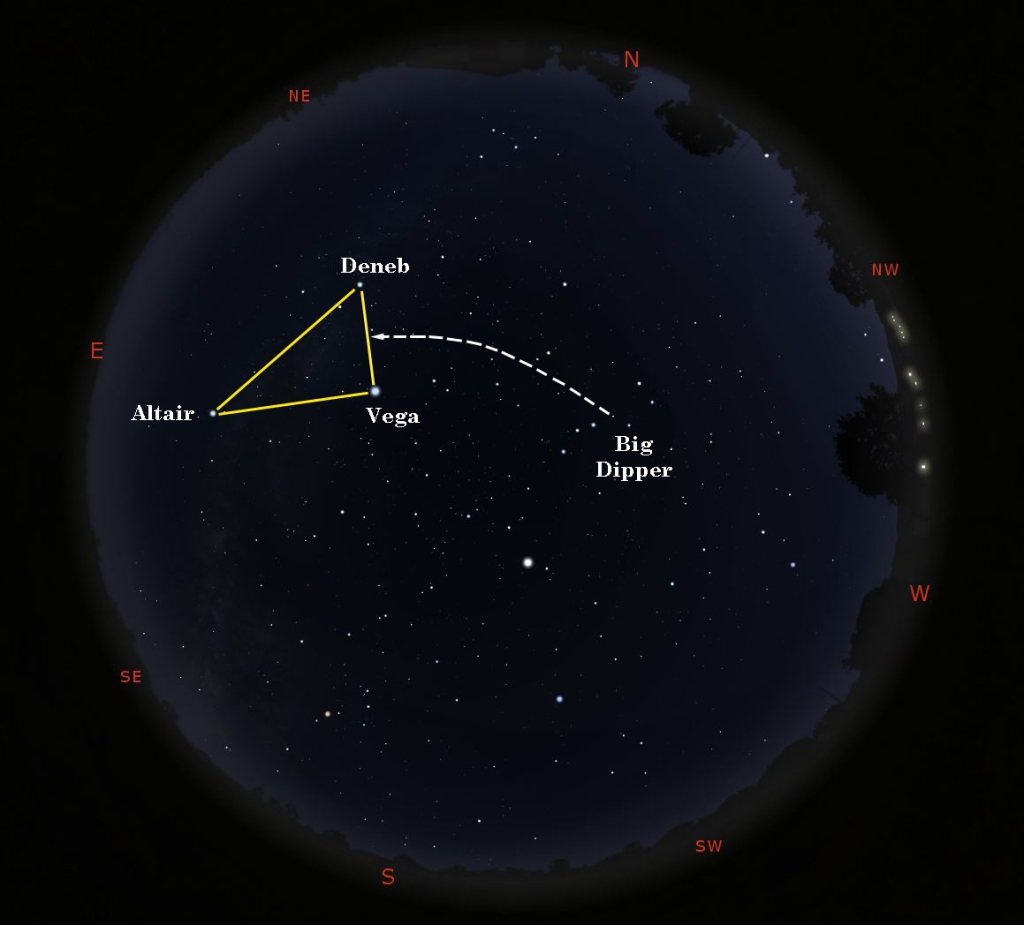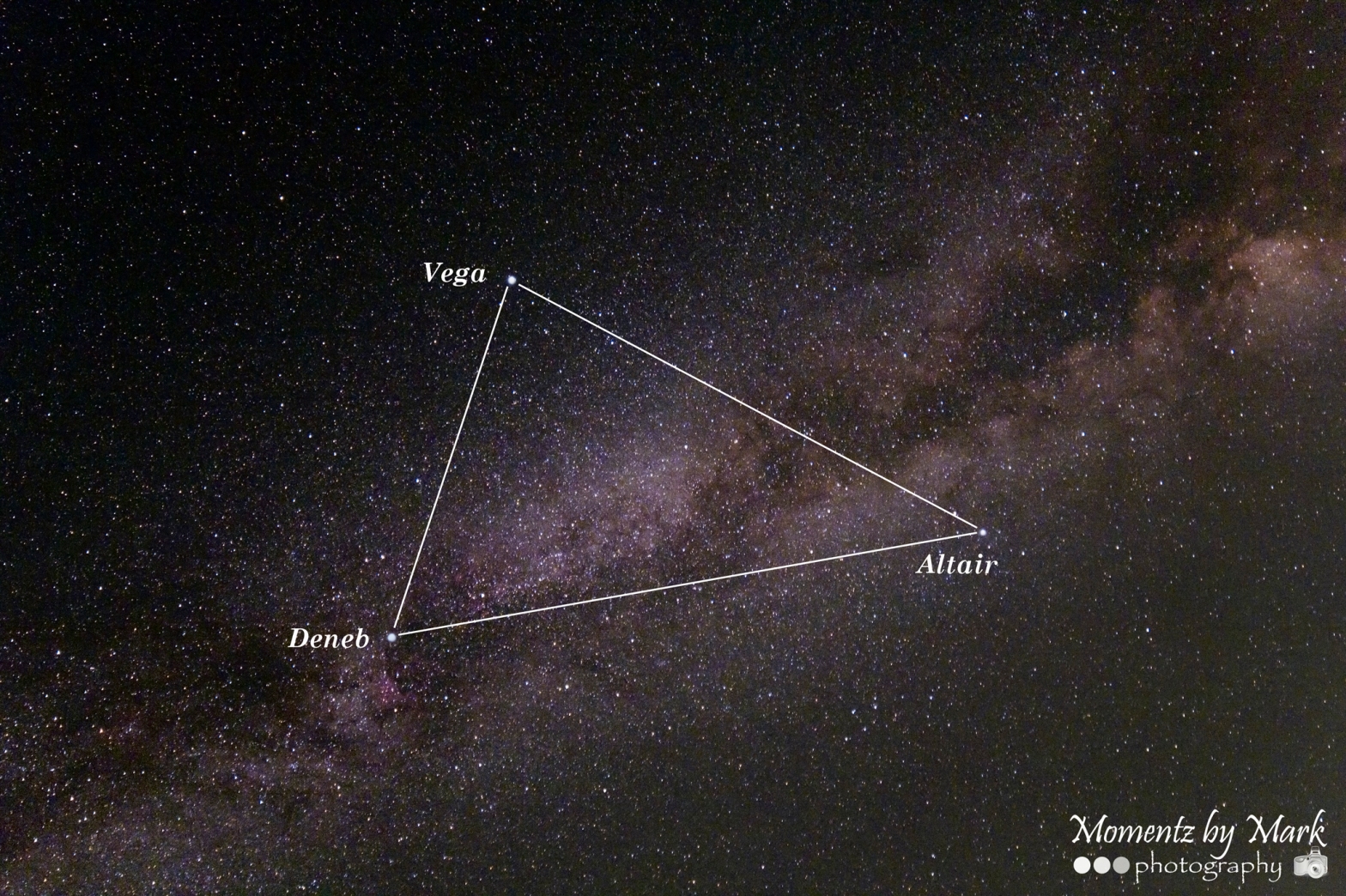Summer officially arrived at 5:44 p.m. EDT on June 20. And as darkness falls this week, the famous “Summer Triangle” can be found in the eastern sky. It is a distinctive modern figure or asterism that encompasses a large chunk of real estate in the summer sky. This huge, nearly isosceles triangle is composed of Vega, Deneb, and Altair, the brightest stars of three separate constellations. They are much brighter than the surrounding stars which dominate the sky all summer long and into autumn.
The brightest star is bluish-white Vega, in Lyra the Harp. Next in brightness is the yellow-white star Altair in Aquila, the Eagle. And last is Deneb, in Cygnus the Swan. The stars make their appearance in that order as evening twilight fades and the sky grows dark. The Summer Triangle is fortunate to reside far north of the zodiac, which means there are no “star-like” wandering planets to alter its familiar pattern. If you’re new to astronomy, the Summer Triangle is the place to start in familiarizing yourself with the night sky. The Summer Triangle is one of the favorite parts of the sky for most sky watchers because of its sheer simplicity and not being overwhelmed with numerous bright stars like those found in the winter sky.

If you want to star-hop your way to the vicinity of the triangle, find the Big Dipper hanging high in the northwest sky. Using the two stars in the dipper bowl nearest the handle (Phad and Megrez), draw a line between those two stars and extend a line out the open end of the dipper. If you extend that line across the sky to the east by about 60 degrees, you’ll find your gaze somewhere halfway between Vega and Deneb. Once you’ve spied both stars, the long apex of the triangle points to the east southeast and is marked by the star Altair.

Vega is the brightest star in the triangle and appears very bright because of its proximity to us. This star is located 25 light years from Earth which means the light you are seeing left Vega in 1995. Next in brightness is Altair which is 17 light years away. Although Altair is closer, this tells us that in terms of luminosity, Vega is the brighter star. Vega is 48 times brighter than the Sun, while Altair is only 12 times brighter. Deneb is in a class all its own residing nearly 1,500 light years away, but is no comparison between Vega and Altair. Of the three stars, Deneb is the most luminous shining about 80,000 times brighter than our Sun. Deneb is a supergiant star. As such if you were to move Deneb to Vega’s distance, it would appear to shine 16 times brighter than Venus does in our sky. If it were seen in the night sky at this distance, it would cast shadows onto the ground and be visible in the daytime.
The sky is amazing if you take the time to cast your gaze upon it. With just a few simple doorstep astronomy tips, you too can find your way around the night time sky. Take some time tonight to see one of summer’s most iconic asterisms.
Enjoy! And Keep Looking Up!

Thank you for providing a map to the Summer Triangle! I’ve been curious about it since writing about the Qixi Festival and its legend woven around those stars. Sadly, I don’t have a very good view of the eastern sky, but I’ll keep an eye out nonetheless. 😊
LikeLiked by 1 person
It will continue to rise higher with each passing night and by late August/early September, it will reside overhead at sundown.
LikeLiked by 1 person
Oh, I should be able to see it then! Thanks.
LikeLike